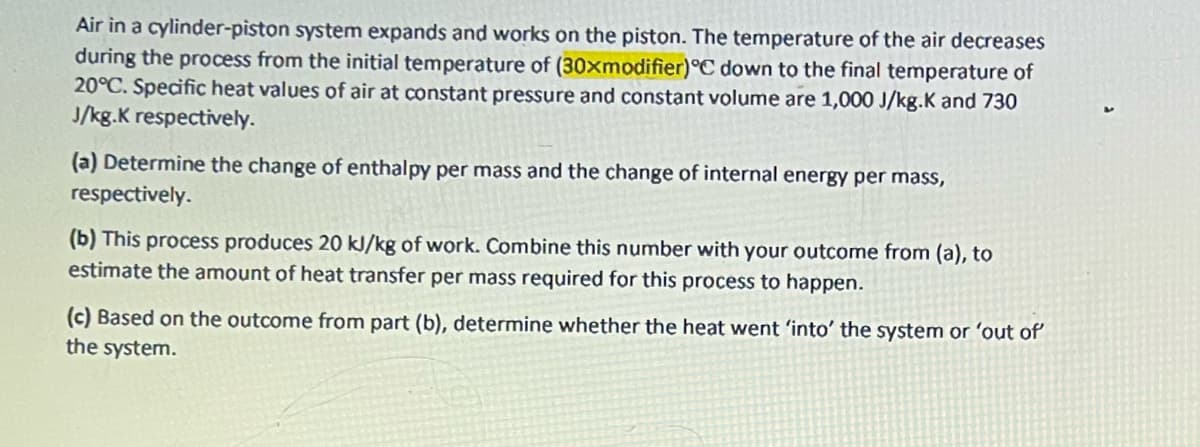Air in a cylinder-piston system expands and works on the piston. The temperature of the air decreases during the process from the initial temperature of (30xmodifier)°C down to the final temperature of 20°C. Specific heat values of air at constant pressure and constant volume are 1,000 J/kg.K and 730 J/kg.K respectively. (a) Determine the change of enthalpy per mass and the change of internal energy per mass, respectively. (b) This process produces 20 kJ/kg of work. Combine this number with your outcome from (a), to estimate the amount of heat transfer per mass required for this process to happen. (c) Based on the outcome from part (b), determine whether the heat went 'into' the system or 'out of the system.
Theory and Design for Mechanical Measurements
Measurement is a term that refers to analyzing a manufactured component regarding the degree of accuracy for dimensions, tolerances, geometric profile, roundness, flatness, smoothness, etc. Measurement always involves comparing the manufactured component or the prototype with a standard specimen whose dimensions and other parameters are assumed to be perfect and do not undergo changes with respect to time.Precisely in mechanical engineering the branch that deals with the application of scientific principles for measurements is known as metrology. The domain of metrology in general deals with various measurements like mechanical, chemical, thermodynamic, physical, and biological measurements. In mechanical engineering, the measurements are limited to mechanical specific such as length, mass, surface profile, flatness, roundness, viscosity, heat transfer, etc.
Basic principles of engineering metrology
Metrology is described as the science of measurement, precision, and accuracy. In other words, it is a method of measurement based on units and predefined standards.

Step by step
Solved in 2 steps with 2 images









